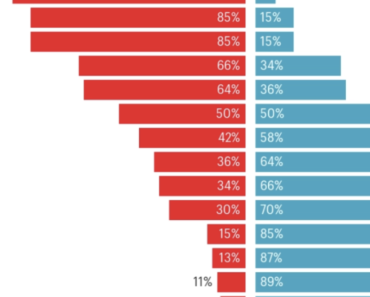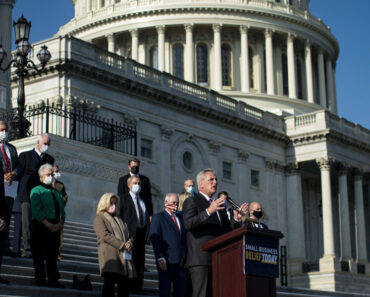This post was originally published on this site
Subscribe to Outbreak, a daily newsletter roundup of stories on the coronavirus pandemic and its impact on global business. It’s free to get it in your inbox.
Markets—and companies—can’t catch a break.
The Dow and S&P 500 slid roughly 3% on Monday, despite new efforts from the Fed to buy assets with no limit and buy corporate bonds to help buoy markets, announced early in the morning.

Meanwhile, the estimates of the economic toll coronavirus is taking continue to pile up. Goldman Sachs now estimates that EPS growth for 2020 will be negative 33%—or $110, down drastically from $165 in 2019. On a quarterly basis, Goldman estimates EPS growth year over year will equal -15%, -123%, -21%, and +27% respectively. (To wit, the firm is now estimating -24% GDP growth for the 2nd quarter).
Goldman’s new estimate only shows how rapidly the situation has changed: “Early in the correction, investors were focused on quantifying the downside risk to near-term earnings, but were confident that EPS growth and share prices would recover later in 2020,” analysts at Goldman wrote. “As the virus spread and its economic impact intensified, they have been forced to grapple with whether the sharp decline in near-term activity will be followed by an equally sharp recovery (‘V’), last multiple quarters before improving (‘U’), or create lasting economic damage that reduces the outlook for earnings in 2021 and beyond (‘L’).”
That change in expectations is what Michael Reynolds, investment strategy officer at Glenmede Trust, calls “truly dramatic.”
As Bankrate.com’s senior economic analyst Mark Hamrick puts it, “Trying to avert insolvency is the order of the day.”
“The reality is, the existential threat that publicly traded companies are facing is just a question of whether they can live to fight another day—That’s why having some of these measures being brought in to try and keep them solvent are so important,” Hamrick tells Fortune.
Among those measures is the Fed’s latest drastic moves—which did little to prevent the major indices from dropping 3% Monday.
“The Fed has shown their hand, they’ve taken the kitchen sink and thrown it at the market, taken the plumbing out of the wall and thrown that too—they’ve done just about everything they can,” Glenmede’s Reynolds tells Fortune.
For those like Lauren Goodwin, economist and multi-asset portfolio strategist at New York Life Investments, while fiscal stimulus is likely the best solution to the current issues, “there is no reason to suspect that the Fed is ‘done’ if more action is needed,” she wrote on Monday.
But now, Reynolds says, it’s up to the fiscal side.
On Monday, that fiscal aid still didn’t come, as U.S. lawmakers failed to push a bill through that would provide for massive fiscal spending to stimulate the economy—And while markets have been hungry for news the package could pass, “there’s politicking back and forth,” Reynolds notes.
For now, efforts to stifle the spread of coronavirus (through business closures and quarantines, to name a few) are still overshadowing attempts to quell their impact, notes UBS Wealth Management’s chief investment officer Mark Haefele. “The U.S. fiscal response to offset this hit to economic activity is accelerating, but for now the impact of the containment measures is still overwhelming the policy response,” Haefele wrote on Monday.
Goldman still holds their market bottom prediction that the S&P 500 could hit 2,000. But as case counts continue to mount and the economy awaits gruesome economic data, investors are still asking: how low can you go?
More must-read stories from Fortune:
—Why the extraordinary dollar surge spells more trouble for the global economy
—These estimates of how much COVID-19 will hurt the economy are terrifying
—The NYSE is closed because of the coronavirus. What that means for investors
—How thinking like a golfer can help you ride out market mayhem—Listen to Leadership Next, a Fortune podcast examining the evolving role of CEO
—WATCH: U.S. tax deadline moved from April 15 to July 15
Subscribe to Fortune’s Bull Sheet for no-nonsense finance news and analysis daily.




